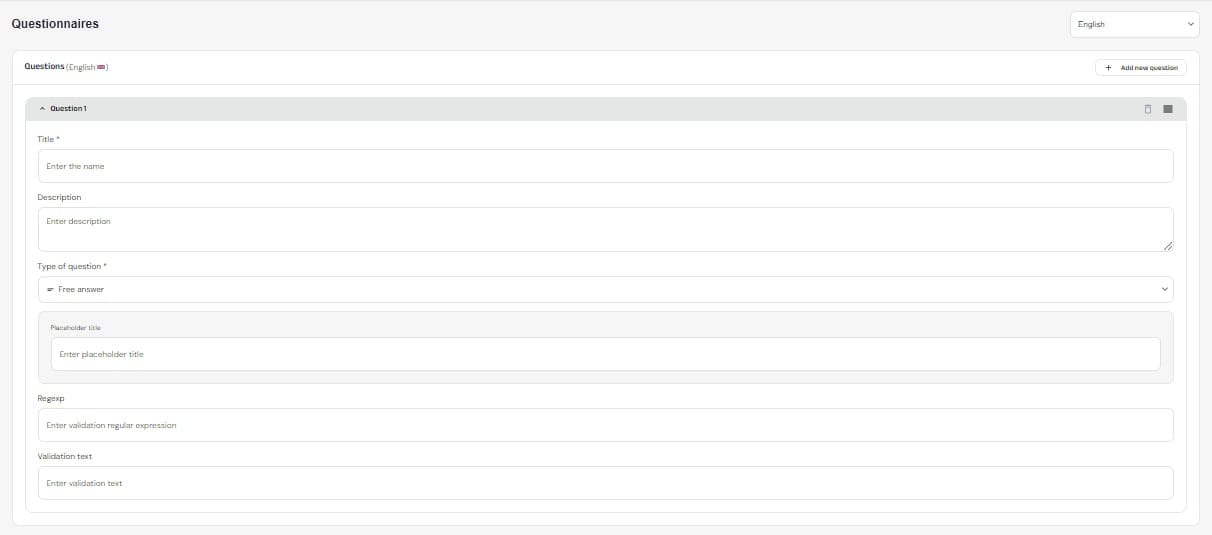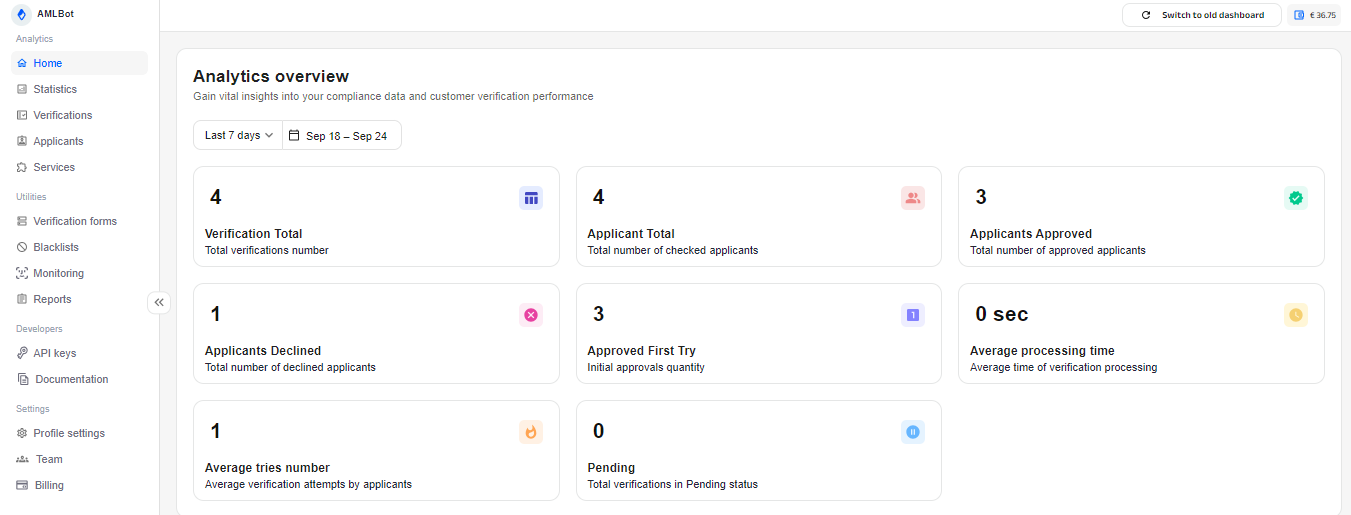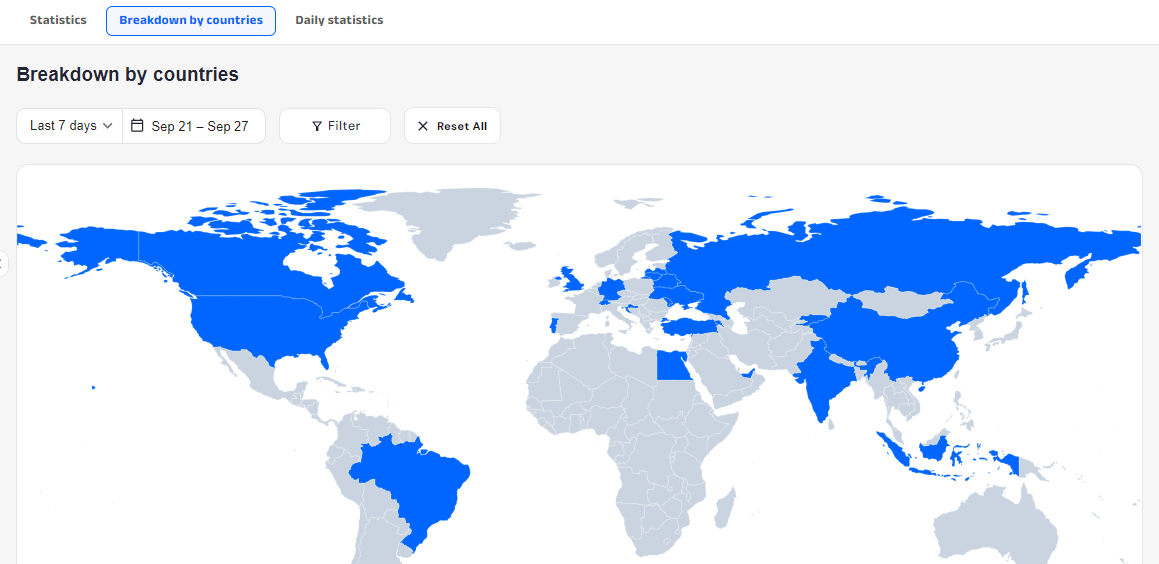KYC Update: Smarter, Faster, and More Secure

We are excited to introduce a significant update to one of our core products – KYC (Know Your Customer)!
The latest release includes new features to streamline the onboarding process, offering businesses more flexibility in meeting regulatory requirements while improving user experience.
Key Upgrades:
- Enhanced Stability & Improved Design: The user interface has been revamped, focusing on accessibility and ease of use. It is more reliable and scalable, making KYC an ideal solution for handling large verification requests without impacting performance.
- Support for More Languages: KYC now supports 25+ languages, including English, Chinese, German, Spanish, Dutch, and French (among others), making it easier for companies operating globally to meet regional compliance requirements.
- Detailed Reports: Reports are now more comprehensive, offering a deep dive into each verification step, from document checks to video quiz results, ensuring more transparency and accuracy.
- Video Call Options: Users can now participate in live video calls as part of the verification process. This feature adds an extra layer of security by allowing agents to interact directly with applicants.
- Two-Factor Authentication (2FA): Our platform now supports 2FA for a higher level of security, requiring users to verify their identity using an authenticator app like Google Authenticator.
Exploring the KYC Update Interface
We've already covered the significant enhancements in the updated KYC. Now, let’s dive deeper into how the interface reflects these updates.
Verification Steps
The verification process now consists of multiple steps designed to ensure thorough identity checks. From basic Profile Information/Document/ Address Verification to advanced methods like Liveness Detection, Tax ID, and Source of Funds.
In addition to standard checks, the new Video Quiz offers an interactive way to verify users' identities through adjustable questions. The Live Video option allows for real-time face-to-face verification. The new update also introduces the Questionnaires, allowing businesses to create custom verification questions for applicants.

Language Support Expansion
Operating globally? No problem. The platform has expanded its supported languages to 25+ options, including English, Russian, Chinese, German, Portuguese, and Kazakh, ensuring businesses can easily operate globally.
By offering an array of language options, the platform helps companies to provide a seamless user experience across different regions, ensuring that verification processes can be quickly completed in the user’s native language.
Analytics

This page provides a comprehensive snapshot of KYC performance metrics, including total verifications, the number of approved or declined applicants, average processing time, pending verifications, etc. At the top, users can filter the applicants by period and specific dates.
Reports

This section now gives users a high-level line graph view of Verifications and Applicants over a selected time range. The overview includes two main graphs, each representing trends and quick insights into performance in the verification process:
1. Verifications Graph
- Total (Blue Line 🔵): The number of verifications processed per day.
- Approved (Green Line 🟢): The number of verifications that were approved.
- Declined (Red Line 🔴): The number of verifications that were declined.
2. Applicants Graph
- Total (Blue Line 🔵): The total number of applicants undergoing the verification process each day.
- Approved (Green Line 🟢): The number of approved applicants.
- Declined (Red Line 🔴): The number of applicants who were declined.
By comparing the rates across both verifications and applicants, businesses can assess the effectiveness of their KYC process and make adjustments where needed. It allows them to make data-driven decisions quickly and ensure that their verification process is operating smoothly.
Volume of Verifications
The graph summarizes verification trends over the specified time range. It helps to track and analyze how the verification process is performing on a daily basis.
- Total (Blue Line 🔵) –The Total Number Processed Each Day.
- Approved (Green Line 🟢) – Approved Verifications.
- Declined (Red Line 🔴) – Declined Verifications.
This graph provides a simple and intuitive way to monitor trends in verification activity. Users can quickly identify days when verification activity spikes or declines and see how many verifications are approved or declined over time.
Breakdown by Countries

This section provides a geographical representation of where verifications are conducted. The data is presented on a world map, with countries that have conducted verifications highlighted in blue. It offers valuable insights into where users are coming from, which can help companies adjust their onboarding processes or allocate resources more effectively in key regions.
Daily Statistics
This section offers a detailed breakdown of daily key verification metrics. It includes the total number of verifications completed each day, the number and percentage of verifications approved or declined, the average number of attempts applicants made to complete the verification, the automated checks percentage, etc. Users can also create a detailed report to download the displayed data for record-keeping or further analysis. This is particularly useful for generating reports that can be shared with compliance teams or used in audits.
Verifications
In this section, users can track and manage completed verifications. At the top, users can filter verifications based on time and use the search bar, where users can input a Verification ID to find specific verification records. This makes it easy to track down individual verifications for review. Additionally, sorting options allow organizing verifications by various criteria, such as the date they were completed.